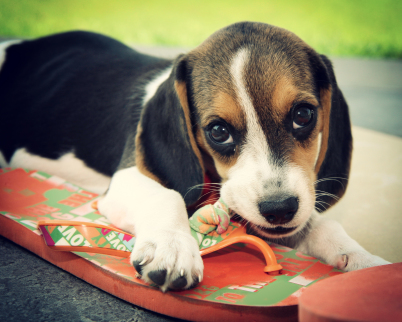First aid is good to know, especially when it comes to children who get bit by a pet. You may think your pet won’t bite, but it happens! Even when the most behaved and well-mannered pet comes into contact with an inquisitive child, particularly one they don’t know, it could happen.
Remember, holidays and all the commotion can easily put your pet on the defensive!
And what about when children are out of sight and decide to go after a neighbor’s pet or gets bit by a wild animal, snake or spider?
First aid is needed first!
1.Thoroughly clean the wound to determine how severe it is. Some bites are little more than indentations on the skin while others are deep into the muscle.
2. Bites to the face or neck require immediate attention by medical personal. If none is available nearby, get someone to hold pressure on the wound until you can get to a doctor or hospital. They will be able to properly care for this type of wound.
3. Keep the child as calm as possible. With a minor wound which hasn’t broken the skin, washing the wound is the first step. You’ll then follow by cleansing the wound with an antibiotic ointment or cream to keep germs out. It is best to leave a wound uncovered unless there is a chance it will get dirty.
4. Wounds with bleeding are more serious. The skin has been broken which means the germs from an animal’s mouth can get into the bloodstream. Again, clean the wound to determine how bad it is. Cover the bite with a gauze pad and apply pressure.
5. If the wound is in another location, hold the pressure for a few minutes and then release it. If it continues to bleed after direct pressure is applied, call 911. They can either give you direction over the telephone or get emergency medical care to you.
8. Once you have been able to get the bleeding stopped, get your child to see the doctor as quickly as possible. Call them and explain the situation that your child was bitten by an animal. They will want to see the child and will likely prescribe antibiotics to ensure the wound doesn’t get infected. They will also suggest you find the animal which bit your child to be able to test it for rabies.
Safety First
Dog and cat bites are the most common but that doesn’t mean your child can’t be bitten by another animal. Unless you know the animal that bit your child was poisonous, such as a spider or snake, simple first aid like cleaning the wound and seeing the doctor may be all that is require.
If the bite was from a spider or snake, you’ll need to get your child to the emergency room as quickly as possible after you are able to get a good look at it. This will help the doctor determine if the bite was from a poisonous variety and ensure they give your child the proper care.
Children are precious and parents want to do everything they can to protect them. If your child gets bitten by an animal, the above first aid tips will give you the knowledge you need until you can seek medical attention.

